Nearly four years after Blizzard announced Diablo Immortal to a at Blizzcon 2018, the game is finally here. And if you’re like me, there’s a good chance you haven’t followed Immortal’s development since its first showing. Not knowing what to expect, I had a chance to play the game ahead of its official launch tomorrow and left the experience both excited and worried about what I saw.
Set five years after the end of Diablo 2: Lord of Destruction, Immortal opens with your character arriving by boat in the town of Wortham, a location from Diablo 3. You find the hamlet under attack by Skarn, the self-styled Lord of Damnation.
I haven’t played the game’s story through to its end, but what unfolds following the introduction is a far more interesting narrative than what Diablo 3 had to offer. Immortal inherits some of its predecessor’s more annoying tendencies. Characters, particularly villains, talk too much, and the game is missing the atmosphere that made past Diablo games so memorable. But on the whole, Immortal serves as a more fitting sequel to its predecessors than Diablo 3 ever did.
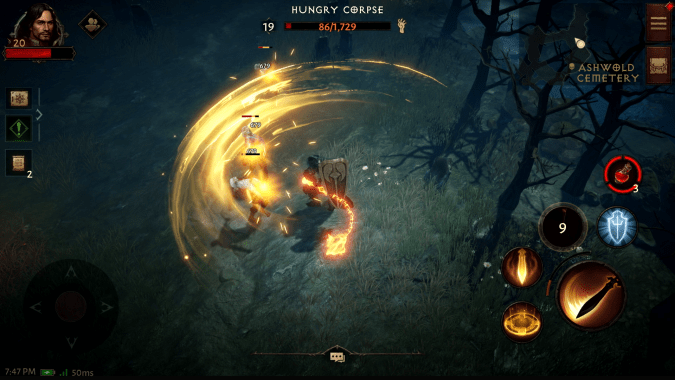
Blizzard / NetEase
One early zone in the game sees your character venture to the Dark Wood, an area from Act One of Diablo 2. There, you’re reunited with characters like Akara and Kashya. The voice actors aren’t as memorable as their Diablo 2 counterparts, but the way Immortal pulls on the narrative threads established in its predecessor to continue that game’s story is satisfying and memorable.
But what is even more impressive is that Blizzard tells the story in the context of an MMO. As you go about your adventure, you’ll see other players doing the same, and you can freely group up to tackle the campaign – in addition to dungeons, raids and Immortal’s many other activities – as a party.
Even on a small display, the game features classic Blizzard polish. Controlling your character is similar to titles like . On the bottom left of the screen, there’s a virtual thumbstick for moving your character, while on the right-hand side, you have dedicated buttons for your different skills. Immortal includes controller support, and if you own a or , they’re the best way to play the game on mobile.
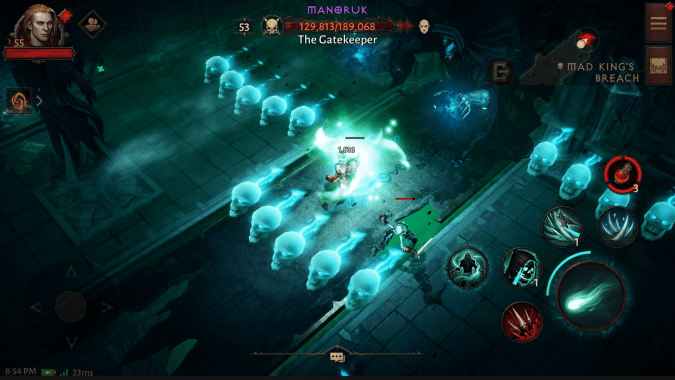
Blizzard / NetEase
You can use up to five skills at any one point. At first, combat feels simplistic, but once you have a full complement of abilities, there’s a fun rhythm to your demon slaying. The best part is encountering stronger enemies like elites and bosses. The latter involve multi-stage fights that reward you for learning their move sets. With Immortal, I can safely say the moment-to-moment gameplay is the best it’s ever been in the Diablo franchise.
But with only two primary and 12 secondary skills per class, it feels like there’s less build diversity than in past games. Unlike his Diablo 2 counterpart, I can’t play my Immortal barbarian as an ax-throwing ranged character or a singer who shouts his enemies to death. He’s strictly a dual-wielding melee character.
Modifying your skills also feels more limited than the system Blizzard had in place with Diablo 3. Instead of earning skill runes as you level your character, you find legendary items that tweak their abilities. For example, I found a piece of armor that made it so my barbarian’s whirlwind attack would send out gusts of winds as he spun about. You can equip a legendary weapon or armor piece in every one of your primary item slots, meaning you can add six modifications to your skills.
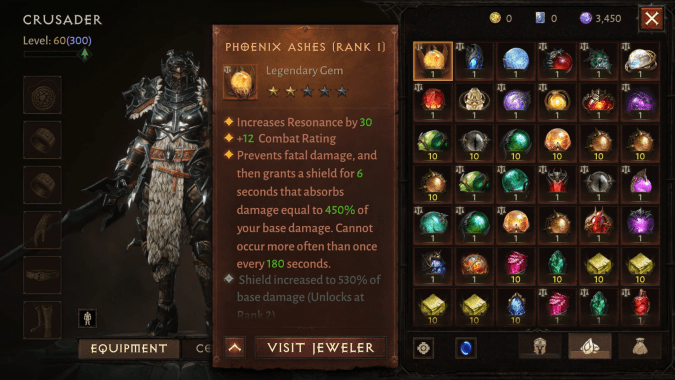
Blizzard
Most items drop with slots you can modify with stat-enhancing gems. Currently, there are two types of gemstones in Immortal. First, there are the “normal” ones you obtain primarily by completing hidden lairs. These are dungeons you can find in the game’s various zones. Each time one opens in the area you’re exploring, Immortal will notify you and you’ll have a few minutes to find it. You can earn up to six normals gems per day by completing hidden lairs. It’s also possible to obtain them as part of bundles you can purchase with real money, from other players via Immortal’s in-game auction house and a merchant who will trade you them in return for an in-game currency called Hilts.
And then there are the game’s legendary gems. They are the most powerful way to enhance your character, with each one adding new abilities to their attacks. For instance, one I obtained with my barbarian empowered him with lightning that would chain to nearby enemies.
You probably already have a sense of where this is going. Not all legendary gems are equal. Many of the one- and two-star ones are relatively easy to obtain, but if you want to outfit your character with the best-in-slot gems for their class, the sense I get is that you will have to spend money.
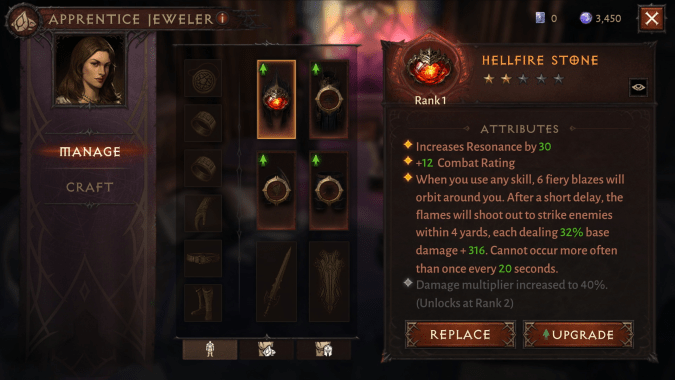
Blizzard / NetEase
That’s due to how Blizzard and NetEase designed the system for obtaining those gems. They drop exclusively through dungeons called elder rifts. You can play through one whenever you want and they take at most three to four minutes to complete. The catch is that you can modify the rewards you get at the end of an elder rift with rare and legendary crests. The former you can obtain through the merchant I mentioned earlier, and as part of one-time bundles you can buy for completing certain milestones with your character. The game also gives you one free rare crest per day.
Rare crests increase your chance of earning one-star legendary gems by five percent. Legendary crests, meanwhile, give you a 100 percent chance for a legendary gem to drop at the end of an elder rift. The catch here is that what one you will get is up to chance. Adding a further wrinkle to things is that five-star gems can be anywhere between one and five stars in quality when they drop, and you may need to use other gems to unlock their full potential.
There are a few ways to earn the odd free legendary crest, but you’ll be primarily buying them. A pack of 10 costs 1,600 of the game’s premium currency, or about $25. Legendary crests represent Immortal’s primary form of monetization, but you can also spend money on cosmetics, an enhanced battle pass and a few other things.
The gem system has enough similarities to loot boxes that Activision Blizzard won’t in countries with laws against that kind of monetization. It’s also a setup that rewards “whaling.” In other words, the players willing to spend nearly endless amounts of money on the game will be the most powerful.
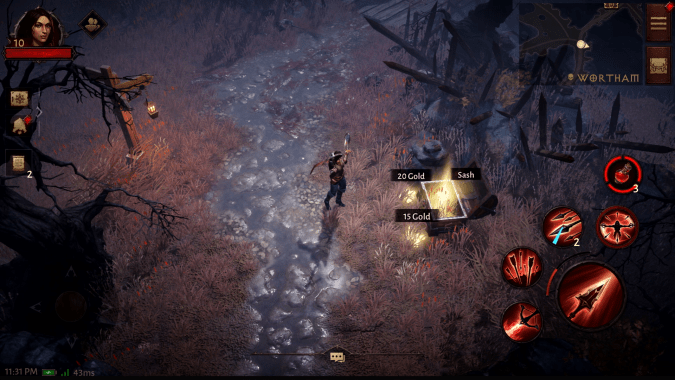
Blizzard / NetEase
How you will feel about Immortal’s monetization will depend on what you want to get out of it. You can safely ignore all the systems I mentioned if all you want is to play through the game’s story and level your favorite classes. But just how much you’ll need to spend to participate in the game’s endgame is hard for me to say. Going into tomorrow’s release, the consensus among Immortal’s community is that the .
Again, all of that may not matter to you, but if there’s an issue with Immortal’s monetization, it’s how counter it is to the spirit of the franchise. When Blizzard removed Diablo 3’s controversial gold and real-money auction houses in 2013, the studio said it did so because they ultimately .
It must also be said how easily Immortal could become addictive for some people. In the week Blizzard granted me early access to the game, I spent nearly every spare moment I could find playing through it because I was having so much fun. And when the game becomes officially available on , I plan to spend money on things like the enhanced battle pass, but I won’t pay to buy any legendary crests because I think that system is predatory. Some won’t have that restraint.
Outside of , there hasn’t been a new Diablo game in 10 years, and, as of this June, it will be 23 years since Blizzard released Diablo 2. And I think that’s what makes Immortal so easy to be conflicted about. It shows the studio can still create engaging experiences when it gives its talented staff the time they need to work on a project, but it’s also a game that’s impossible to separate from its economics. It’s easy to see a scenario where Immortal is hugely successful for the studio and ends up informing its approach to Diablo 4 and future projects.
All products recommended by Engadget are selected by our editorial team, independent of our parent company. Some of our stories include affiliate links. If you buy something through one of these links, we may earn an affiliate commission.
Credit: Source link


Comments are closed.